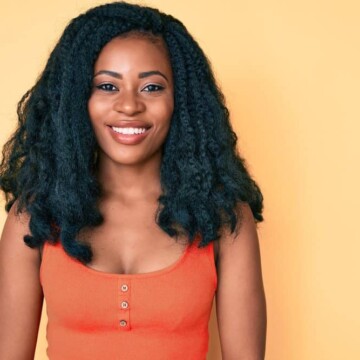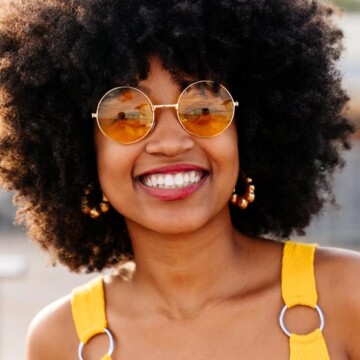
Coloring your hair at home is an inexpensive way to play around with your look and have some fun. But things can quickly go awry if you don’t use the coloring components correctly.
There’s a rumor out there stating that you can use conditioner instead of developer in a pinch– that it can act as a developer. Could this be true?
Can you use conditioner as developer?
That’s what we’ll be addressing in this article. By the end, you’ll know whether conditioner can be used as a developer replacement in your color mix.
Table of Contents
- 1 Can You Use Conditioner as Developer?
- 2 How To Use Hair Developer
- 3 What Can You Use Instead of a Developer?
- 4 You Don’t Need a Developer for Other Dye Types
- 4.1 Use a Semi-Permanent Hair Color
- 4.2 Use Hair Wax
- 4.3 Can I Mix Permanent Hair Dye With Conditioner Instead of Developer?
- 4.4 What Is a Good Substitute for Developer?
- 4.5 What Happens When You Mix Conditioner With Hair Dye?
- 4.6 Can I Use Peroxide Instead of Developer?
- 4.7 Can I Use Shampoo Instead of Developer?
- 4.8 Related Articles
Can You Use Conditioner as Developer?
We don't recommend using conditioner as developer when you mix hair dye. One of the most critical steps to coloring your hair with permanent dye is to mix the dye with a developer.
If you skip the developer and use a hair conditioner instead, your color might not take or will come out incredibly patchy and uneven. That is because conditioner and developer have two extremely different effects on the hair.

Why Developer Is Non-negotiable for Permanent Dyes?
Developers contain differing amounts of peroxide. The peroxide lifts your hair’s outermost layer (i.e., hair cuticle), which allows the dye pigments to settle inside your strands.
Without a developer, the dye has no way to enter your strands, leading to temporary color that sits on the outside of your hair shaft. Developers come in different levels, which we’ll look at below.
Developer Levels
A developer’s level refers to its ability to oxidize your color. Although there are many levels available, the vast majority of developers come in 10, 20, 30, and 40 strengths.
In this section, we’ll walk you through what each level means.
- 10 vol developer - 10 vol developer contains a small amount of cuticle lifting peroxide and is typically used with toners and tints. This level of developer is used for colors in the same shade range as your base tone and is ideal for no-lift permanent color.
- 20 vol developer - Unlike 10 vol developer, 20 vol can lift your color by one or two levels. 20 vol developer is also best suited for gray coverage and can create a longer-lasting color result. Opt for this developer-level if your hair is over 50% gray and you want all-over coverage.
- 30 vol developer - 30 vol developer can lift your shade by two or three levels and is best suited for anyone looking to achieve a shade no more than two or three levels above their natural hair color. Although 30 vol developer is excellent for achieving a more vibrant color, it may lead to hair damage.
- 40 vol developer - 40 vol developer is the most potent developer level and can create a significant color change. It can lift your color by at least four levels and is perfect for achieving lighter shades like pastels, blondes, and silvers. Because it is so strong, 40 vol developer could lead to severe hair damage if misused.

How To Use Hair Developer
Now that you understand that hair developer is necessary with permanent hair dye, let’s get into how to best use it. There are many ways to go wrong in the dyeing process, and this section will help to minimize dye mishaps.
Gather Your Supplies
- Permanent hair dye
- Developer
- Gloves
- Hair clips
- Nonmetal mixing bowl
- Shower cap
- Petroleum jelly
- Applicator brush
Dye Your Hair With Developer
- Start with clean, dry hair.
- Apply a thin layer of petroleum jelly to the skin in front of your hairline and the tops of your ears.
- Divide your hair into four sections and secure each one with a clip.
- Combine the permanent dye with the developer in a 1:1 or 1:2 ratio. While most dye kits come with a developer, occasionally, you’ll have to purchase it separately.
- Undo one of your sections and separate out a smaller section of hair. Apply the dye to your hair, starting about an inch from your roots.
- Keep repeating the process until your hair is thoroughly coated.
- Double back and apply dye to your roots once you’re about halfway through the processing time.
- Put on your shower cap and wait for the time suggested on your package of dye. That will typically range from 30 to 45 minutes.
- Use cool water to rinse the excess color from your strands. Keep rinsing until the water runs clear.
- Follow up with conditioner and rinse well.
- Air-dry or blow-dry your hair to see your final color.

What Can You Use Instead of a Developer?
While a proper developer is the best thing to use with a permanent dye, there is a substitute that you can use in a pinch – hint: it’s not conditioner.
While we recommend waiting until you have an appropriate developer, you can use diluted 3% peroxide in an emergency. Mix equal parts hydrogen peroxide and distilled water and saturate your hair with it. Then, apply your color and rinse after the recommended time (usually around 30 minutes).
You Don’t Need a Developer for Other Dye Types
While a developer is crucial for permanent dyes, they aren’t necessary for other types of hair color. Here are a few alternatives to permanent dye that don’t require the use of a developer. Although they don’t last as long, you’ll still be able to get vivid results that last for days or weeks.
Use a Semi-Permanent Hair Color
Unlike permanent color, semi-permanent hair dyes don’t need to be used with developers. Semi-permanent dyes coat your strands and sit on the outside of your cuticles.
As they fill in tiny holes in your hair’s cuticles, you may even notice that your hair feels smoother and more moisturized than it did before coloring. Here’s how to use semi-permanent dye.
Gather your Materials
Instructions for Dyeing Hair with Semi-Permanent Dye
- Shampoo your hair and rinse well.
- Spread a thin, even layer of petroleum jelly to your hairline to prevent the dye from staining your skin.
- Grab your favorite semi-permanent dye and apply it to your damp strands. Make sure the dye is evenly coated.
- Put on a shower cap and wait for around 15 to 45 minutes. The longer you let the dye sit, the more intensely colored your locks will turn out.
- Rinse your hair thoroughly with cool water until the water runs clear.
- Dry your hair and style as usual.

Use Hair Wax
Like semi-permanent dye, hair wax sits on the outside of your strands. That means you don’t have to use a developer or conditioner to get your color to take. Here’s how to use hair wax.
Pick Up Your Supplies
Hair Wax Application Instructions
- Put on old clothes, and use towels you don’t mind getting stained. Protect the surrounding area against splatter.
- Shampoo and towel dry your strands. Work out any knots or tangles with a wide-toothed comb.
- Put on gloves.
- Separate a small section of damp hair and start applying the wax. Apply a thin layer to start, and gradually add more to reach your desired color level.
- Let your hair airdry to lock the color in place. Try not to move around too much, or the wax will drip or transfer.
- Style your hair as usual.

Note: Colored wax doesn’t work well with hot tools. It can gunk up your styler and lead to hair damage. If you want to wear your hair straight, straighten your hair beforehand and apply the wax onto dry, already styled hair.
Can I Mix Permanent Hair Dye With Conditioner Instead of Developer?
Mixing permanent hair dye with conditioner instead of a developer is not recommended, as conditioners cannot be used as an alternative to hair developers. Developers are specifically formulated to open the hair cuticle and allow the color to penetrate, while conditioners are designed to moisturize and smooth the hair. Using conditioner with permanent hair dye will not provide the desired results.
What Is a Good Substitute for Developer?
There is no perfect substitute for hair developer, as developers play a crucial role in the hair coloring process by opening the hair cuticle and enabling color penetration. If you're using a semi-permanent dye, you can try a direct dye that doesn't require a developer. However, using a developer is necessary for permanent hair color to achieve the desired results.
What Happens When You Mix Conditioner With Hair Dye?
When you mix conditioner with hair dye, the conditioner can dilute the dye, leading to a less vibrant color or a color that doesn't last as long. Conditioners are designed to moisturize and smooth hair, not to open the hair cuticle, and allow for color penetration like developers. Mixing conditioner with hair dye may result in a less effective hair coloring process.
Can I Use Peroxide Instead of Developer?
Peroxide is an active ingredient in most hair developers, but using it on its own is not recommended. Hair developers contain a specific concentration of hydrogen peroxide and are formulated to work in conjunction with hair color. Using undiluted peroxide instead of a developer can result in uneven color and damage to the hair. Using a hair developer designed explicitly for the hair coloring process is best.
Can I Use Shampoo Instead of Developer?
Using shampoo instead of developer is not recommended, as shampoo and developer serve other purposes. Developers are specifically formulated to open the hair cuticle and allow for color penetration, while shampoos are designed to cleanse the hair and scalp. Mixing shampoo with hair dye will not provide the desired results, as shampoo cannot substitute the function of a developer.
- How to Dilute Permanent Hair Dye
- Does Developer Lighten Hair?
- Developer vs Bleach
- What Does Developer Do?
So now you know that skipping developer will cause your color not to take or come out super patchy. Instead of wasting time and money, make sure you have developer on-hand before you attempt to color your strands. If you insist on ditching the developer, try coloring your hair with semi-permanent or direct dyes instead.




